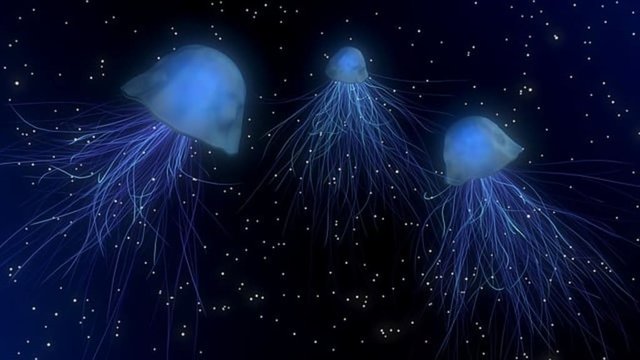"Danger in the Waters: 12 Deadly Sea Creatures You Need to Know"
The world's oceans are teeming with life, from the smallest plankton to the largest whales. Among this vast array of marine creatures, some harbor deadly secrets, posing significant risks to humans who dare to venture into their territory. In this article, we'll explore twelve of the most dangerous sea creatures that inhabit the world's waters, shedding light on their unique characteristics, habitats, and the potential dangers they pose to unwary swimmers, divers, and sailors.

Box Jellyfish (Chironex fleckeri)
Found primarily in the waters of the Indo-Pacific region, the box jellyfish is infamous for its potent venom, which can cause severe pain, cardiac arrest, and even death within minutes of a sting. Its nearly transparent body makes it difficult to spot in the water, increasing the risk of accidental encounters.
Great White Shark (Carcharodon carcharias)
As one of the most iconic apex predators of the ocean, the great white shark commands respect and fear wherever it roams. With its razor-sharp teeth and powerful jaws, this formidable predator is capable of inflicting devastating injuries on its prey, including humans.
Stonefish (Synanceia spp.)
Camouflaged to blend in with its surroundings, the stonefish is often referred to as the world's most venomous fish. Found in the shallow waters of the Indo-Pacific region, its dorsal spines deliver a potent neurotoxin capable of causing excruciating pain, paralysis, and even death.
Saltwater Crocodile (Crocodylus porosus)
As the largest living reptile and apex predator in its habitat, the saltwater crocodile commands respect and fear along the coastlines and estuaries of Southeast Asia, Australia, and the Indian subcontinent. With its powerful jaws and lightning-fast ambush attacks, this formidable predator poses a significant threat to humans who stray too close to its territory.
Blue-ringed Octopus (Hapalochlaena spp.)
Despite its small size, the blue-ringed octopus is one of the ocean's deadliest creatures, harboring a potent neurotoxin in its saliva that can cause paralysis and respiratory failure within minutes of a bite. Found in the waters of the Indo-Pacific region, its vibrant blue rings serve as a warning to potential predators.
Portuguese Man o' War (Physalia physalis)
Often mistaken for a jellyfish, the Portuguese man o' war is actually a colony of specialized organisms known as zooids. Its tentacles deliver a powerful venom that can cause intense pain, inflammation, and even systemic symptoms in humans who come into contact with them.
Saltwater Crocodile (Crocodylus porosus)
The saltwater crocodile deserves a second mention due to its widespread distribution and formidable reputation as a top predator in its ecosystem. With its ability to launch surprise attacks from the water's edge, this apex predator commands respect and caution from humans who venture into its territory.
Lionfish (Pterois spp.)
Originally native to the Indo-Pacific region, lionfish have become invasive species in many parts of the world due to their popularity in the aquarium trade. Equipped with venomous spines along their dorsal fins, these voracious predators can deliver painful stings to unsuspecting swimmers and divers.
Tiger Shark (Galeocerdo cuvier)
Named for its distinctive vertical stripes and powerful jaws, the tiger shark is one of the ocean's most formidable predators. With its indiscriminate feeding habits and voracious appetite, this apex predator poses a significant threat to humans who venture into its territory.
Box Jellyfish (Chironex fleckeri)
The box jellyfish merits another mention due to its potent venom and reputation as one of the ocean's deadliest creatures. Found primarily in the waters of the Indo-Pacific region, encounters with this nearly transparent predator can result in excruciating pain and potentially fatal consequences.
Moray Eel (Muraenidae spp.)
With its snake-like body and formidable jaws lined with razor-sharp teeth, the moray eel is a fearsome predator in its underwater realm. While not typically aggressive towards humans, these elusive creatures can deliver painful bites if provoked or cornered.
Cone Snail (Conus spp.)
Found in tropical and subtropical waters around the world, cone snails are known for their beautifully patterned shells and potent venom. Their harpoon-like proboscis delivers a cocktail of toxins that can cause paralysis, respiratory failure, and even death in humans who handle them recklessly.
In conclusion, the world's oceans are home to a diverse array of creatures, many of which possess adaptations and defenses that make them formidable predators. From venomous jellyfish to stealthy predators lurking in the depths, understanding and respecting these creatures is essential for staying safe in their watery domain.